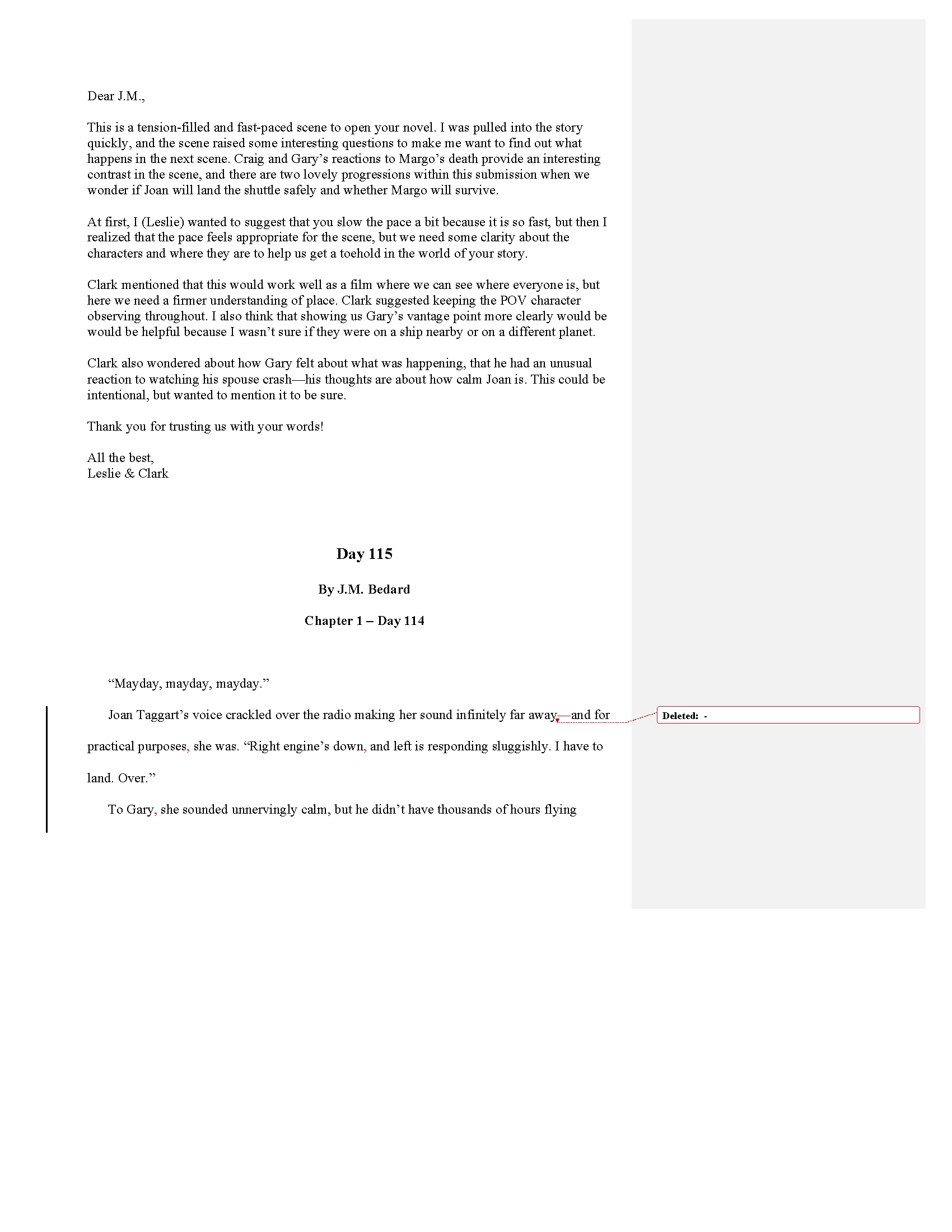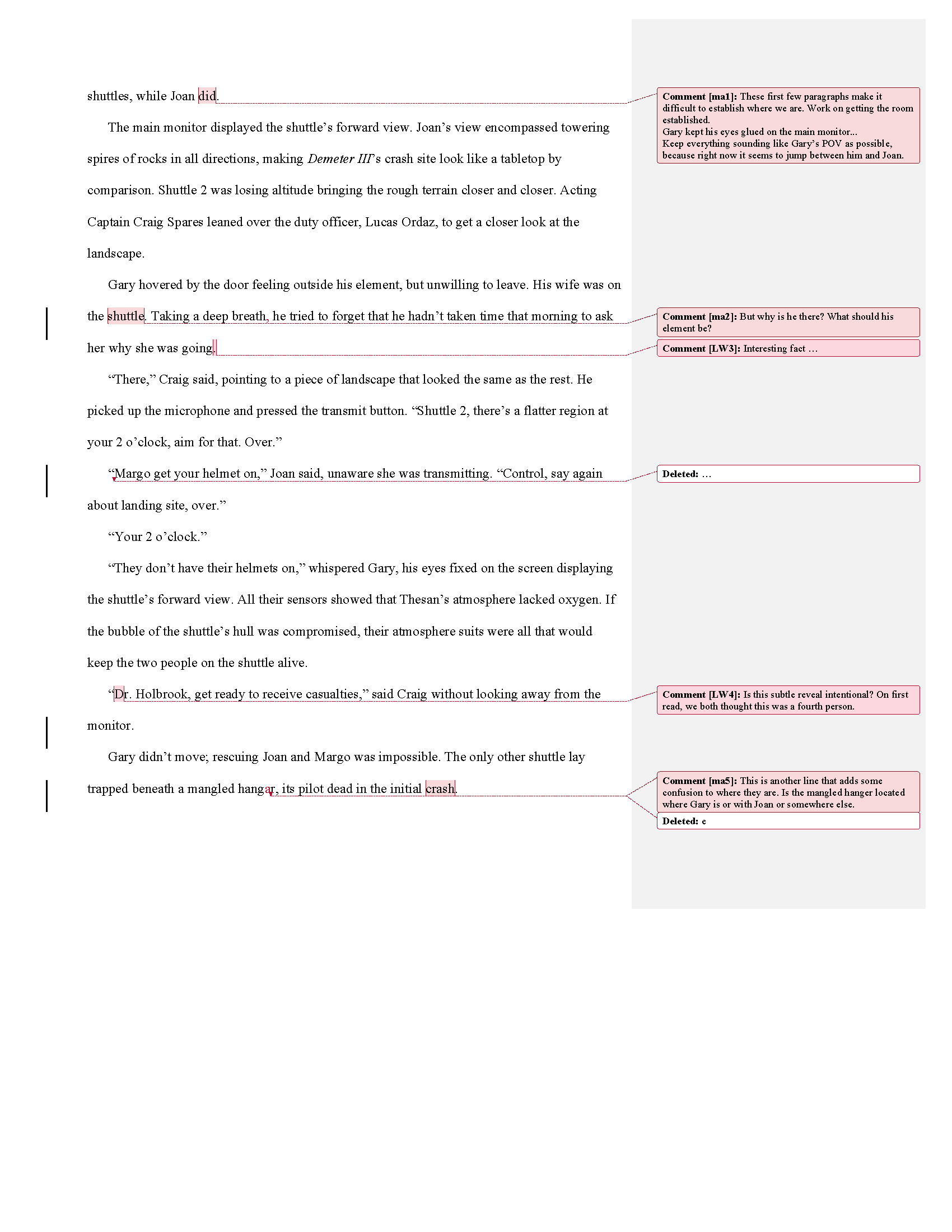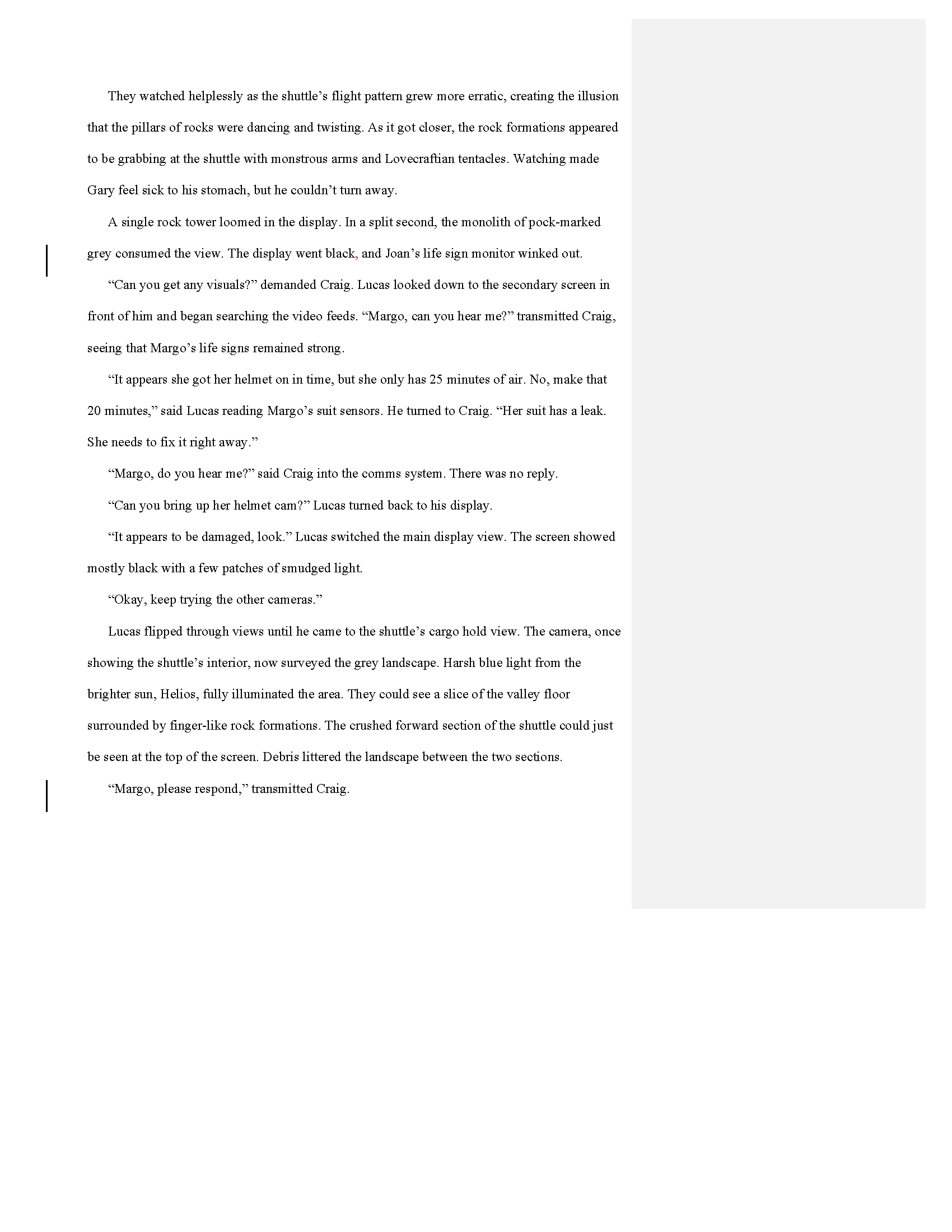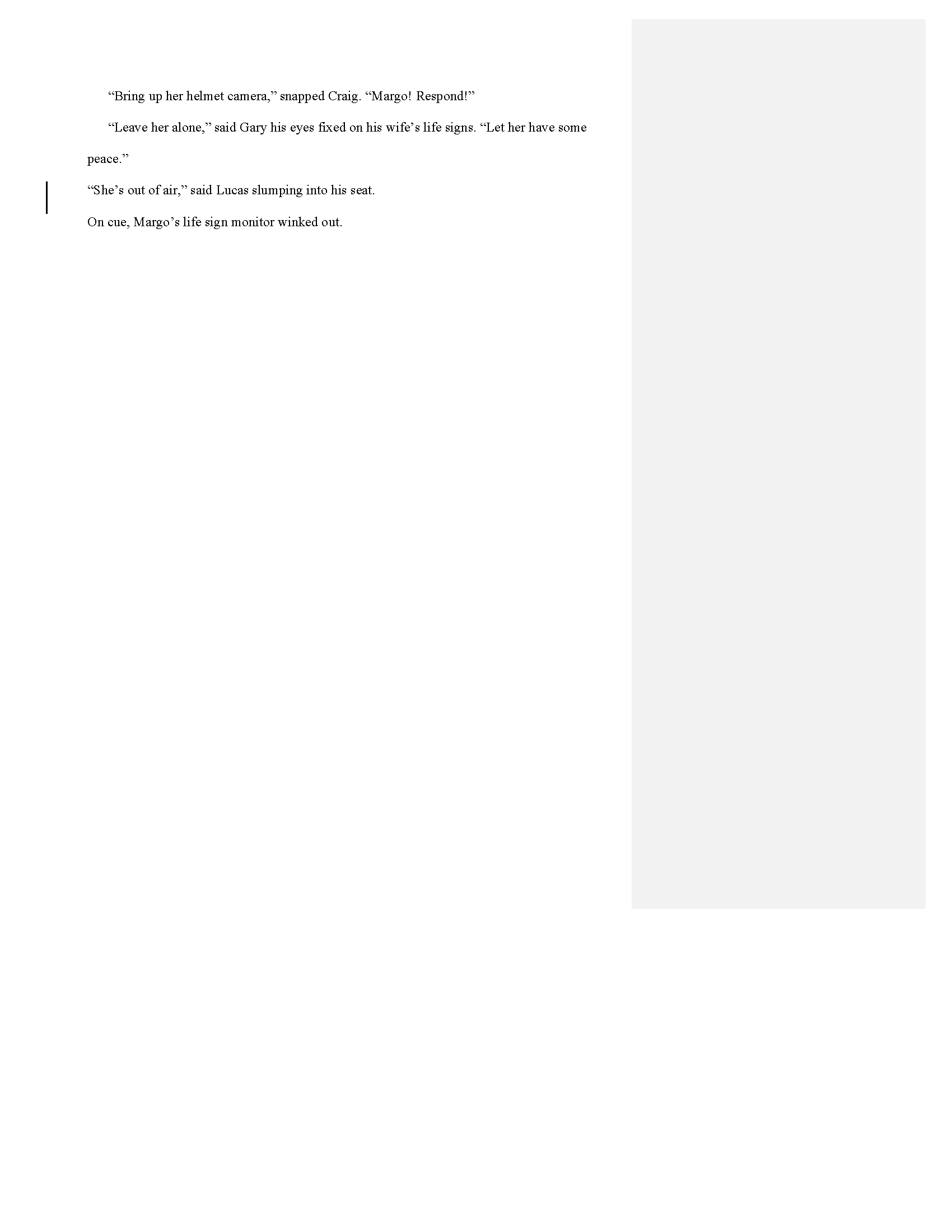Description
In this episode, Leslie and Clark critique the first chapter of Day 115, a science fiction novel by J. M. Bedard. They discuss pacing, providing enough detail to make clear the setting and characters’ vantage point, and questions that pull the reader into your story.
Listen Now
Show Notes
“Pacing is the speed at which the reader perceives things to happen in a story.
What’s the difference? Speed is objective, but your reader’s perception of speed isn’t. As the writer, you can make a fleeting moment last a week or a year go by in the blink of an eye.”
Editorial Mission—PACING
To get a feel for the pacing in your story and what will work best in individual scenes, it helps to experiment with the pace, different speeds and different ways of increasing and decreasing the rate at which the reader receives information. Take a scene from your story and use the methods below to increase and decrease the pace. Keep tweaking until you find what feels like the optimal speed.
Be aware of the needs of the story, but also consider what you tend to write, what’s easiest for you because you may be choosing that by default.
Increase the Pace
- Stick with the main story
- Balance of Dialogue/action/exposition—more of the former two
- Change scene and POV character often
- Choose showing over telling, choose direct experience rather than reflection
- Cut words
- Zoom lens
- Shorter sentences/paragraphs/chapters
- Word choice: strong verbs with hard consonant sounds, avoid adjectives and adverbs
Decrease the Pace
- Wander into subplot
- Longer sentences/paragraphs/chapters
- Increase exposition in balance between action/dialogue
- Linger in describing/introducing characters, places
- More showing, reflection
- Zoom out, wider view
Do you want editorial missions sent directly to your inbox?
Sign up below to join the podcast club and you'll never miss an episode—or an editorial mission—from the Writership Podcast!






